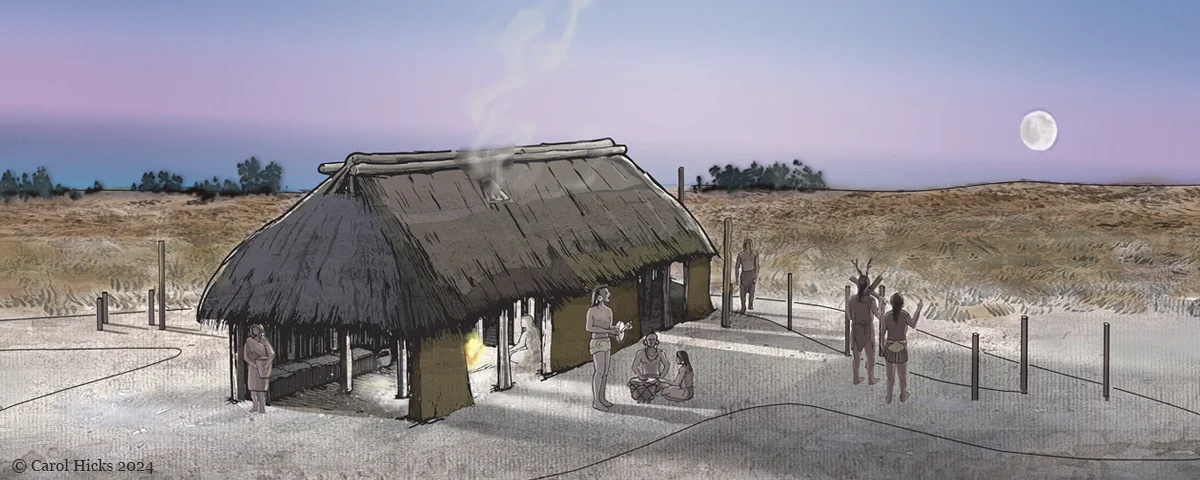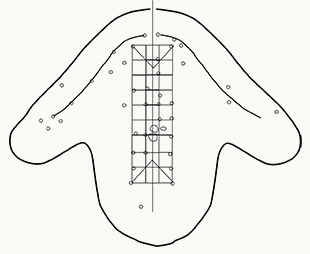
Hopewell Lunar Observatory
The Newark Earthworks Fairground Circle was the first stop on my mini-mound tour in July of 2024. Once inside the circle walls, we walked over to the central set of mounds called the Eagle Mound. Sometimes, these are referred to as effigy mounds. They looked like small undulating hills. Maybe they have eroded since pioneers named them, but I wasn't convinced that shape looked like an eagle or bird's footprint. Later, I found a short video on www.ancientohiotrail.org Eagle's mound had been excavated in 1928. They found postholes in an interesting configuration and showed a computer graphic recreation of a building with wing-like screened walls. They had found a copper cut-out that looked like a New Moon, a copper pointer-like shape, and mica. It occurred to me that the site might have been a lunar observatory and that the wing-like posts marked the positions of the moon.
At some point in the past, the building had been dismantled or burned down, and the fire pit had been filled with white sand and then covered with a layer of dirt. At another Hopewell Site, Seip Earthworks, two very large connected buildings were buried under a mound. So it seemed more likely that Eagle's Mound was an honored sacred place and was not an effigy mound.

I did more research to imagine what an observatory might look like. I started by copying the positions of the postholes I saw in the video. On a trip to India, I attended the Ganga Aarti at Haridwar, a 2,000-year-old ceremony held nightly to bless the Ganges. Remembering that I thought a ceremony would be held during lunar observations, the banner image above is the result of my research and imagination.
Here is a list of the resources I used.
-
Video about Eagle's mound on Youtube.com
www.AncientOhioTrail.org/sites/Newark This website has lots of information about the Newark, Ohio Earthworks. - The thatched building was modeled on the Sunwatch house.
- The horned headdress, ear spools and other artifacts.
- For the figure gauging the moon's position, I first thought of using a single stick with the copper pointer at the end but later went with crossed sticks, which I found the Aztecs used in their astronomical observations.
- Water drum